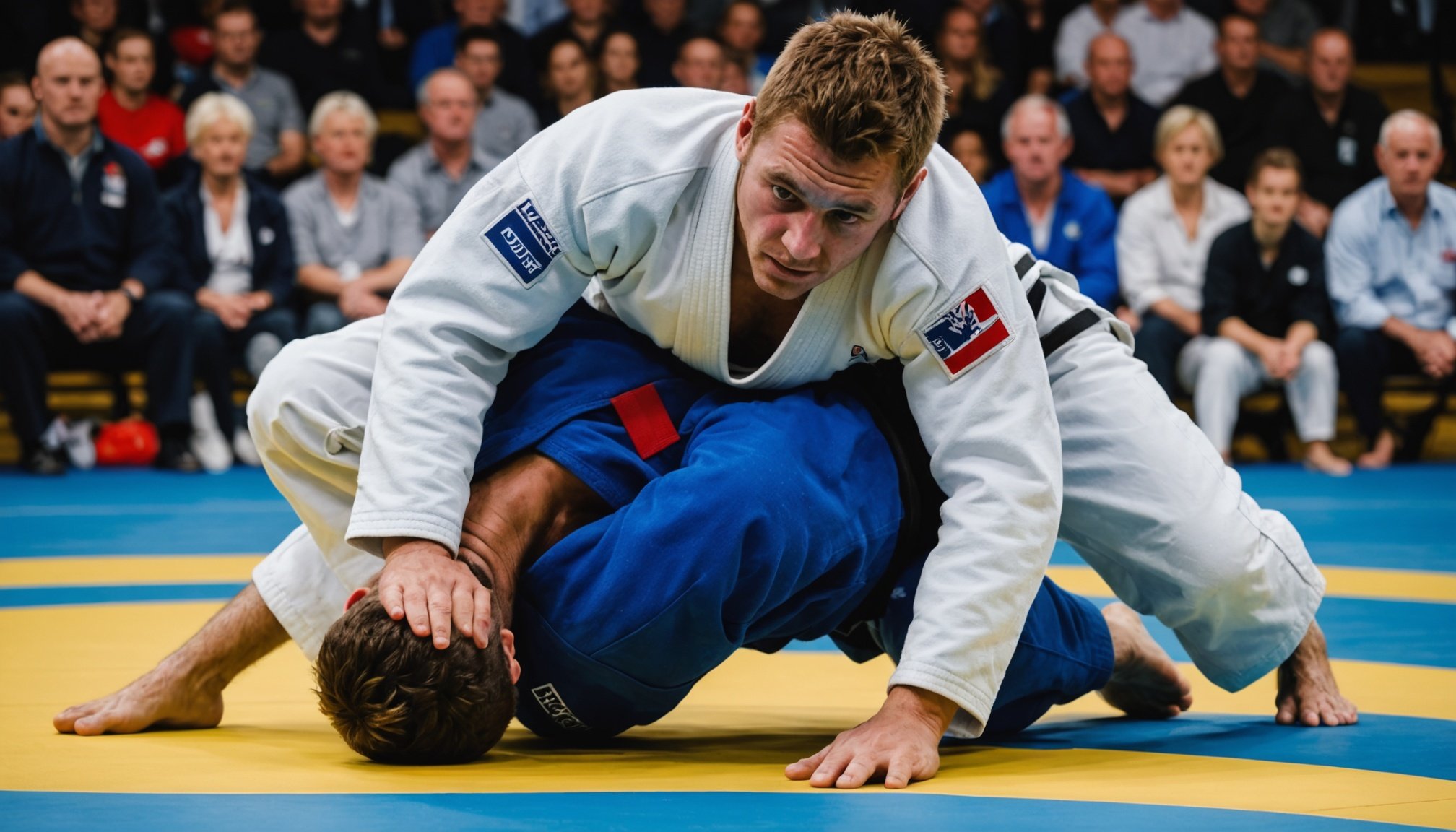Understanding Mental Preparation for Judo Competitions
Preparing mentally for judo competitions is just as crucial as physical training. The foundation of successful performance often lies in building a strong judo mindset, where athletes harness mental training techniques to sharpen focus and resilience.
Mental toughness in sports can significantly influence an athlete’s performance. It enables judokas to remain steadfast under pressure, bounce back from setbacks, and maintain concentration during high-stakes matches. Cultivating this mental robustness often involves targeted visualization strategies.
Topic to read : Mastering Cage Control: Effective Strategies for UK MMA Fighters to Enhance Their Technique
Visualization strategies equip athletes with the ability to mentally rehearse their tactical moves, helping them anticipate scenarios and respond effectively. This technique involves vividly imagining successful execution of judo techniques, boosting confidence and focus. The more detailed and realistic the imagery, the more prepared an athlete will feel.
Effectively managing competition anxiety is another critical element of mental preparation. Developing personalized strategies, such as deep breathing exercises or relaxation techniques, can help reduce stress and improve concentration during a bout. Maintaining a positive yet realistic outlook plays a key role in mitigating the effects of pre-competition nerves.
Also to discover : Preserving Cultural Heritage: Strategies for UK Traditional Wrestlers in Training
In conclusion, integrating mental training techniques, from visualization strategies to anxiety management, forms a comprehensive approach that enhances the judo mindset, potentially translating into on-mat success.
Physical Training Regimens
Achieving success in judo requires more than just technique; a well-rounded training regimen is crucial. A comprehensive approach should include strength conditioning, endurance training, and technique drills.
Components of an Effective Training Plan
In crafting effective judo training plans, it’s vital to establish a balance between different training components. Strength conditioning focuses on building muscle power and resilience, crucial for grappling. Endurance training ensures that practitioners maintain peak performance during extended matches. Incorporating technique drills is also key for honing precise movements and strategic skills.
Balance and Recommendations
A balanced training plan considers both the physical demands and technical skills required for judo. Structure weekly training schedules to include:
- Strength Conditioning: Dedicate two to three days focusing on exercises that build core strength and explosive power, such as squats and deadlifts.
- Endurance Training: Engage in cardiovascular activities like running or cycling, three to four times a week, to enhance stamina.
- Technique Drills: Allocate sessions for practicing throws, holds, and combinations, reinforcing muscle memory and tactical awareness.
Consistency in these areas promotes overall athletic development, equipping judokas with the physical capacity and technical skill needed for success on the mat.
Nutrition for Optimal Performance
For judo athletes, athletic nutrition plays a pivotal role in both preparation and recovery. Optimising one’s diet isn’t just about what to eat but also when to eat.
Proper meal planning can provide the energy needed for intense training sessions and competitions. A well-balanced diet should include a mix of carbohydrates, proteins, and healthy fats. Carbohydrates are a primary energy source, fuelling the body during demanding activities, whereas proteins aid in muscle repair and recovery. Including healthy fats, such as those found in nuts and avocados, ensures additional energy and supports overall health.
Judo diet tips often recommend tailoring meals to align with training schedules. Pre-training meals rich in carbohydrates and moderate in protein can prevent fatigue, while post-training meals should focus on lean proteins and complex carbs to replenish energy and promote recovery.
On competition day, hydration is critical to maintaining performance levels. Athletes should implement effective hydration strategies both before and during competitions. Consuming adequate fluids helps maintain cognitive function and physical endurance, especially in the high-pressure environment of a match. By prioritising these nutritional aspects, judo athletes can enhance their performance and recovery.
Competition Strategies
Focusing on match preparation is crucial for any serious competitor. Athletes often follow meticulous pre-competition routines and rituals to prime themselves both physically and mentally. This could include visualisation, meditation, or specific tactical planning exercises that cement strategies just before facing an opponent.
Understanding opponents is another pivotal aspect. Competitors study previous matches to identify patterns in their adversary’s judo techniques. This analysis allows for crafting adaptable strategies that can change in real time. Utilising the knowledge of an opponent’s strengths and weaknesses helps in predicting their moves, an essential skill while developing responsive tactics.
Key tactics also vary with different phases of a match. Early in the competition, aggressive strategies might dominate to secure an early advantage, but as the match progresses, efficient energy conservation becomes more substantial. The use of judo techniques varies; offensive moves may play a critical role, while defensive tactics may take precedence as opponents become fatigued.
Being thoroughly prepared with a broad range of tactics ensures athletes can adjust swiftly to any scenario, enhancing their chances of success. Although absolute predictability in judo is impossible, a well-rounded approach to strategy can significantly elevate performance levels.
Recovery Practices
Effective recovery practices are pivotal in an athlete’s training regime, ensuring peak performance and minimising risks. Recovery Techniques play a vital role in both physical and mental aspects, addressing Injury Prevention and Post-Competition Care.
Physical Recovery Techniques are instrumental in managing injuries. These include:
- Hydration and nutrition: Proper fueling aids muscle repair.
- Massage therapy and stretching: Alleviate muscle tension.
- Cryotherapy and heat treatments: Reduce inflammation and enhance circulation.
Each technique supports the mechanical repair of tissues, fostering resilience against future injuries.
Meanwhile, Injury Prevention aligns closely with recovery, necessitating consistent application of techniques. Pre-emptive care includes:
- Strength training: Fortifies muscle groups.
- Balance exercises: Enhances proprioception, reducing fall risks.
Mental recovery is as critical as physical. Post-Competition Care incorporates strategies like mindfulness and rest to aid psychological well-being. Techniques such as meditation or progressive muscle relaxation help athletes maintain focus and emotional stability post-event.
In summary, these recovery practices not only promote physical healing but also reinforce mental fortitude, enabling athletes to achieve their best form while safeguarding against injuries.
Personal Experiences and Insights
In the world of judo, firsthand experiences from seasoned competitors, also known as athlete testimonials, often provide invaluable insights into the nuances of preparation and competition. These judo competitor stories shed light on the diverse challenges faced by athletes and the unique lessons learned from overcoming them.
One competitor might share an anecdote about the importance of mental resilience during preparation. This involves maintaining a positive mindset and handling stress gracefully, which can significantly impact performance. Another story could highlight a time when improvisation in technique, learned from past competitions, became the key to success on the mat.
The lessons learned from these experiences often revolve around adapting to unforeseen circumstances. Take, for example, the instance where an athlete faced an unexpected injury just days before a major contest. This situation demanded a focused mental strategy to recalibrate goals and maintain competitive spirit, showcasing the importance of perseverance.
Finally, a prevalent theme across these narratives is the emphasis on overcoming challenges. Whether it’s battling fatigue in rigorous training sessions or strategising against a formidable opponent, these stories underline that growth in judo is as much about mindset as it is about physical prowess. It is through these shared insights that aspiring judokas can find direction and inspiration.
Resources and Checklists
Preparation for a judo competition involves meticulous planning and organisation. Judo Checklists are essential tools that ensure nothing is overlooked on competition day. These checklists typically include items such as the judogi (uniform), belt, water bottle, and identity documents. It’s prudent to review this list the night before to guarantee readiness.
To complement these preparations, Preparation Resources are invaluable. For optimal performance, athletes should focus on nutrition and training. Nutritional resources often recommend a balanced diet rich in proteins and carbohydrates for energy and muscle recovery. This can involve meal guides and hydration strategies to ensure the body is well-fuelled and ready for the demands of competition.
Competition Timelines are critical for structured preparation. Starting months in advance, these timelines map out training intensity, rest periods, and skill refinement sessions. As the competition date approaches, gradually tapering down the intensity allows the body to recover and peak on the day of the event. Such timelines help in visualising the preparation process, offering a clear path to follow and reducing the potential for last-minute stress. By combining these elements, athletes can position themselves strategically for success.











